Things That Go Bump In the Night – Part II
Patrick Villaume – Without a doubt, diving at night is something extraordinary! It’s adventurous, especially for divers not yet used to it, and some might feel anxious, back rolling into blackness. But soon you realise that there is something magical, especially because in the beam of the torch you always see true colours, unlike during day dives. The dark surroundings make this effect even more impressive, like pictures framed in black. After that, you start to relax and concentrate on the specific nocturnal marine animals that appear on night dives you realize, it’s a completely different world and the critters of Lembeh Strait can seem like aliens from another planet.
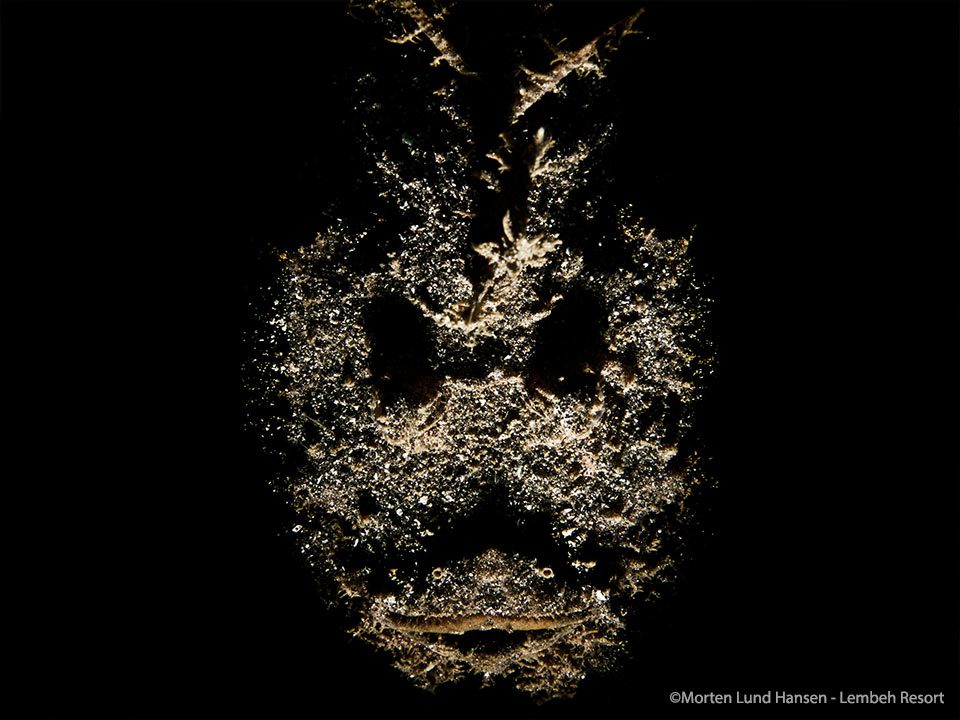
Some fish are well-camouflaged with their host or surroundings in the day time but at night can look very mysterious and scary with the use of creative lighting techniques, like in this photo of a phantom velvetfish. – Photo by Morten Lund Hansen
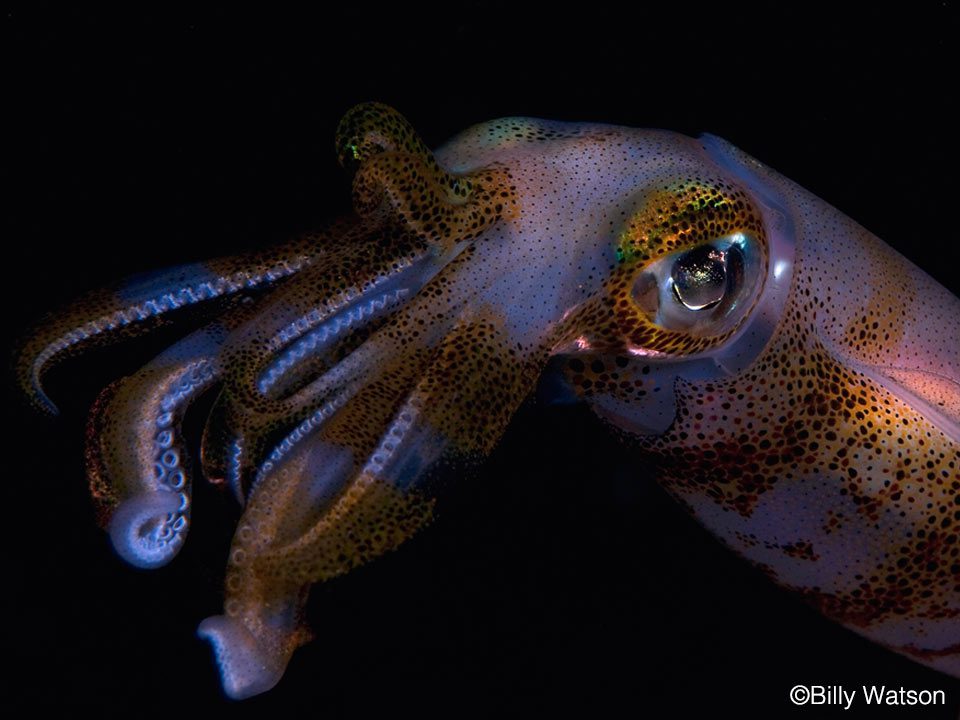
Patrick Villaume – If you are lucky, maybe you will see a big fin squid taking advantage of your light beam to hunt. Sometimes they are so fascinated by the torch’s light that they come and actually touch it before retreating, certainly thinking that we should bring more palatable torches. – Photo by Billy Watson
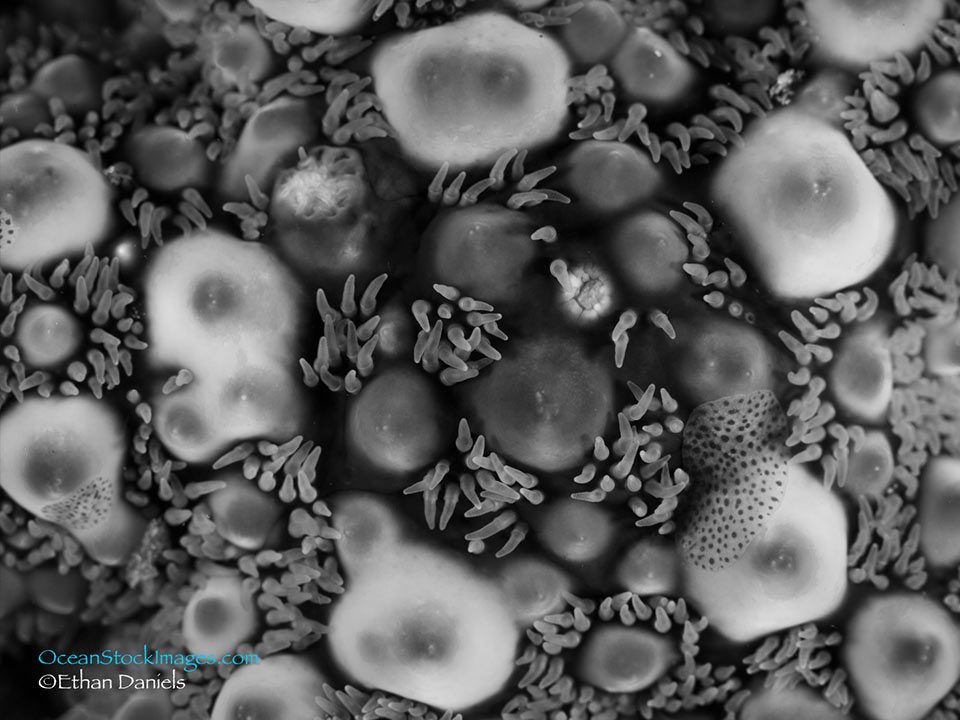
Ethan Daniels – Maybe it’s just me but the wacky facade of Warty starfish always stops me in my underwater tracks. I have been known to spend 30 minutes photographing and just admiring the strange tentacle-like pedicellariae, bubbles, and colors that somehow come together into a beautiful echinoderm. I particularly enjoy shooting them because they can’t out-swim me.
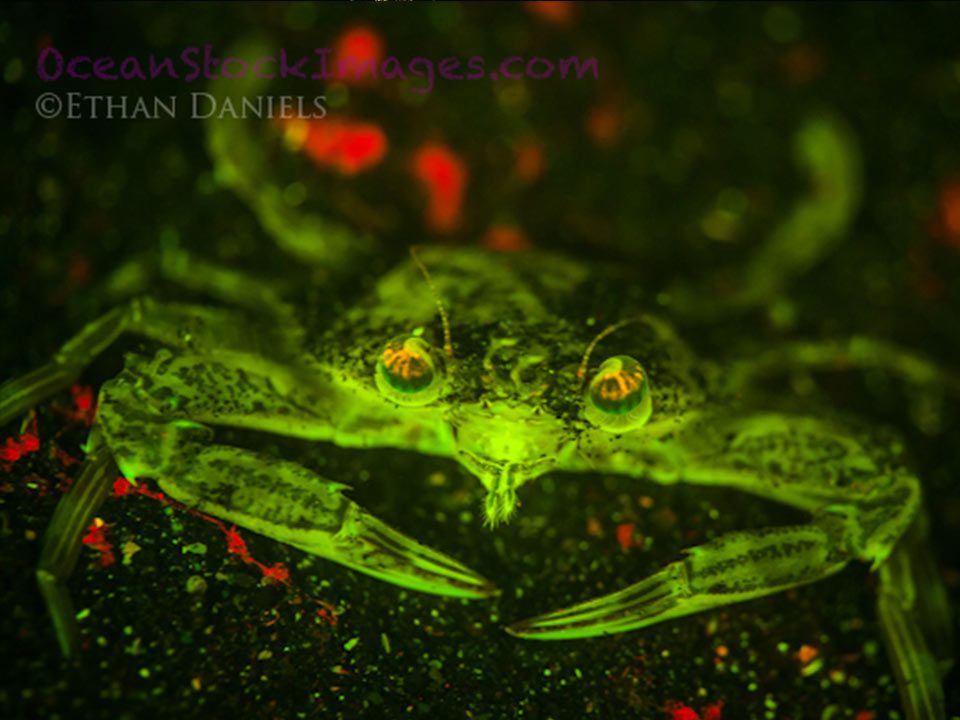
Ethan Daniels – Some crustaceans like swimming crabs, mantis shrimps, and anemone hermit crabs emit a fascinating glow when you do fluorescence diving and they can look like aliens from outer space. Fluorescence occurs when a pigment absorbs one color of light, in this case blue, and emits a different color, such as yellow-green.
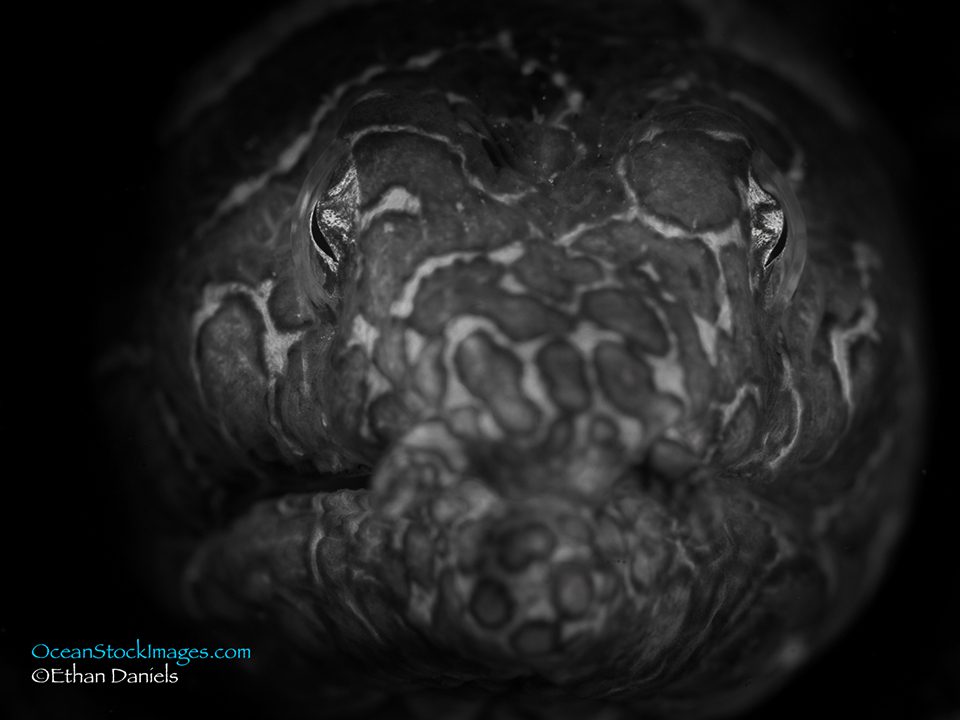
Ethan Daniels – I appreciate that Homo sapiens are greater than a few inches in height because there are a lot of Lembeh predators that might appreciate a small human dinner. Emerging from the sand during crepuscular periods, Napoleon snake eels are one of the many predatory fish found on the black sand slopes of Lembeh. Easy to approach, these sinuous eels make fantastic photographic subjects.
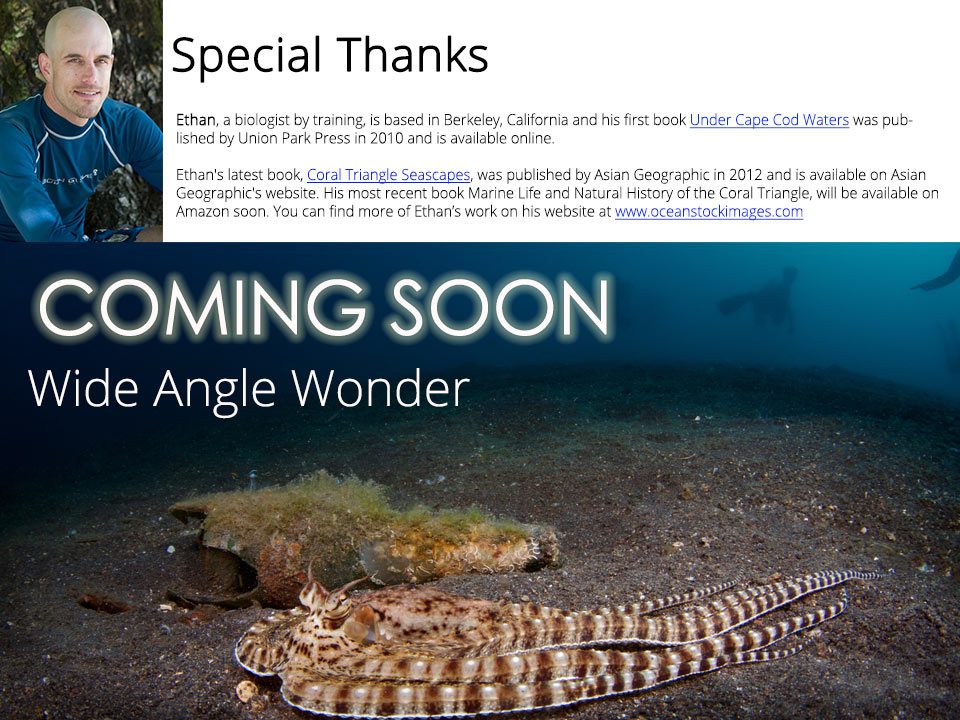 A special thank you to Ethan Daniels for helping us with Things that go Bump in the Night. Ethan is a professional photojournalist who focuses his attentions on aquatic ecosystems. He regularly contributes award-winning images and articles to publications worldwide, guides’ trips, and provides UW photo workshops.
A special thank you to Ethan Daniels for helping us with Things that go Bump in the Night. Ethan is a professional photojournalist who focuses his attentions on aquatic ecosystems. He regularly contributes award-winning images and articles to publications worldwide, guides’ trips, and provides UW photo workshops.



